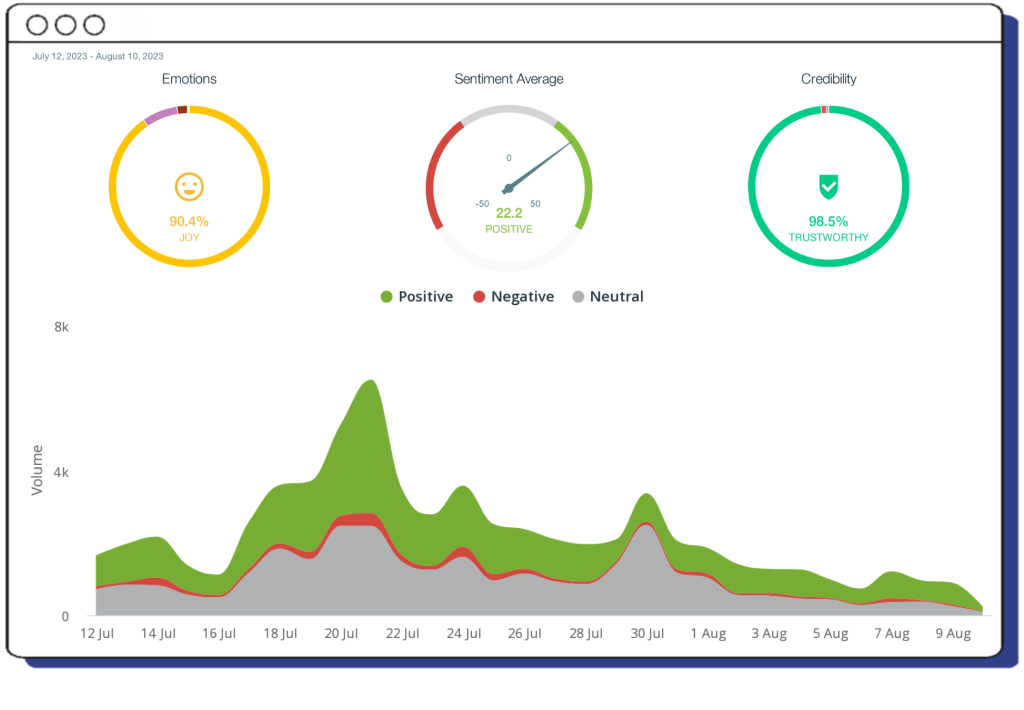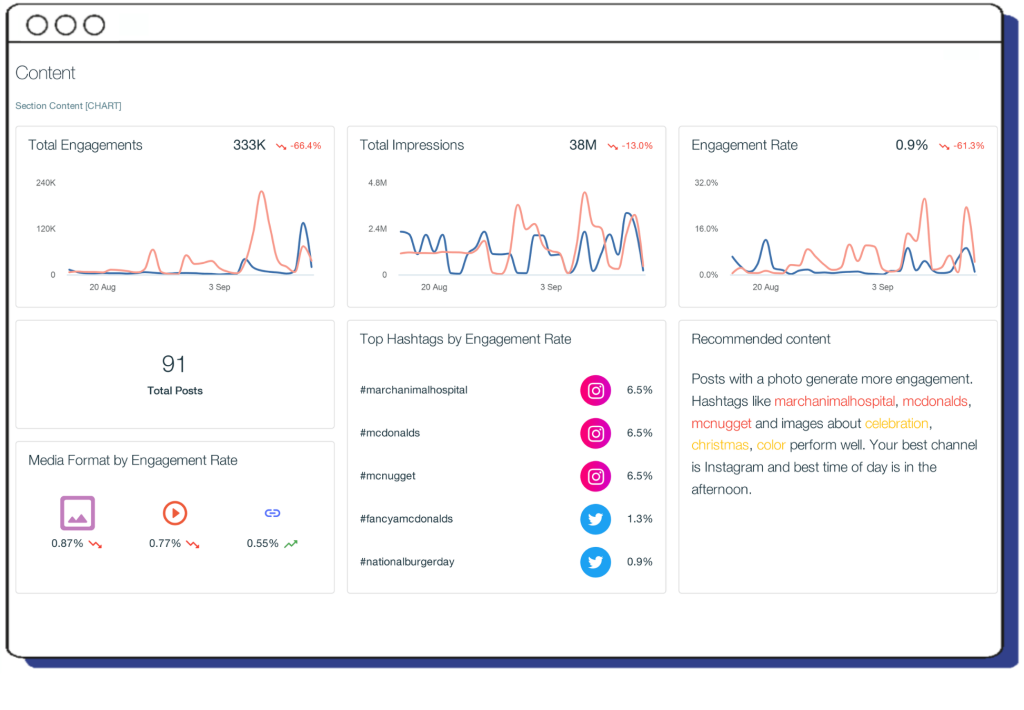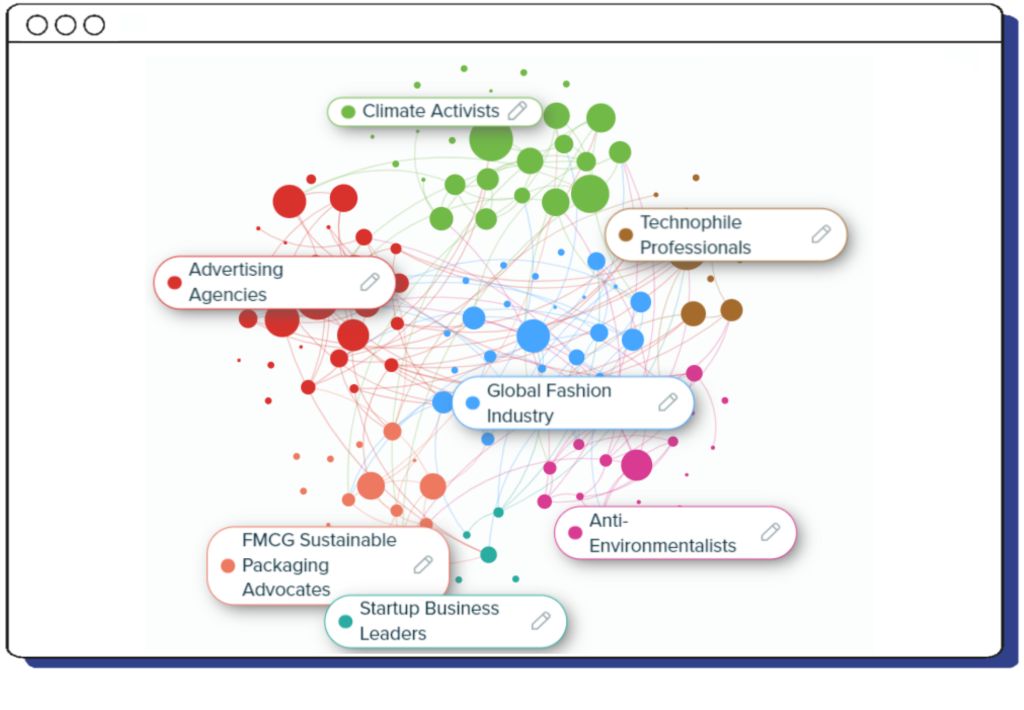
Mastering social media analytics: From data to tracking, tools and reporting
Understanding and tracking metrics as discussed in our previous article 'Strategies to increase social media engagement: Metrics to track for success' is essential. However, metrics are just the beginning. The next step is leveraging these numbers into actionable insights, and for that, you need an in-depth analysis. In this article, we delve into the power of social media analytics.
Table of Contents
What is social media analytics?
Knowing what it takes to make a social post pop isn’t the entirety of planning a successful campaign; the part that comes after - being able to prove your success - is just as critical.
Social media analytics involves collecting, interpreting and analysing data from social media channels such as Facebook, Twitter and Instagram to measure how well (or not) accounts and posts perform. Social media analytics informs decision-making at every level, from social media campaigns to overall marketing strategy and occasionally more substantial business decisions.
Building a strategy and posting content without monitoring metrics like engagement, reach, impressions, followers, CTR, and conversions is a missed opportunity in gauging how your content resonates with your target audience. However, social media analytics reaches far beyond counting likes, shares, and comments. Incorporating social listening adds another layer of insight, offering a deeper grasp of brand perception by monitoring mentions, dissecting online discussions, and determining sentiment.
What’s the difference between tracking social media analytics and social media metrics
In our previous article 'Strategies to increase social media engagement: Metrics to track for success', we delved into key metrics for successful engagement. Now, let's distinguish between 'social media metrics' and 'social media analytics'.
- Social media metrics: The specific data points/ numbers that provide you with insights about your social media performance.
- Social media analytics: The process of collecting, analyzing, and interpreting this data to inform your social media strategy.
While it's easy to conflate the two terms, they aren't identical. However, it's crucial to see them not as isolated entities but as complementary. A robust social media strategy thrives on the synergy of both.
Let’s move on to further uncover the process of collecting, analyzing and interpreting data.
Types of analytics
Social media analytics isn’t a one-size-fits-all approach, there are many types of analytics that will help you master your social media strategy. Beyond social media, analytics are an essential component of a wide range of business strategies in a more general sense. Consider business analytics as an example. Business analytics refer to the process of transforming data into insights to improve decision-making, and these can be split into three types:
- Descriptive Analytics: What is happening? These are the most simple form of analytics, likely to be the type used to form the core of everyday reporting within businesses. Descriptive analytics analyzes past data to uncover insights, trends and patterns from what has already happened in the past. You’ll often find them displayed using visualizations, such as charts or grafts, summarizing a large quantity of data.
- Predictive Analytics: What is likely to happen? Using historical data as a basis, predictive analysis predicts future outcomes or trends to help solve issues or identity opportunities for growth. Prectivide analysis is a more advanced form of data analysis, using statistical models and forecasting techniques to understand the likelihood
- Prescriptive Analytics: What should we do? Prescriptive analytics goes a step further than prediction and data monitoring by recommending actionable insights and the likely outcome of these future decisions. With a combined use of mathematics and computer science, prescriptive analytics combines data from descriptive and predictive sources to assess the implications of future decision making. Ultimately saving businesses a lot of time and money.
While these are individually insightful, business analytics are more effective when implemented as one. So why is an integrated approach within your social media strategy - stemming beyond analytics - essential?
The role of social media listening
Understanding and leveraging social media analytics involves more than just tracking basic metrics. To truly tap into the potential of social media for marketing, brands need to go beyond just measuring engagement and analytics and develop a comprehensive listening and intelligence approach to not only track the numbers, but also gain insight into conversations and sentiment surrounding your brand online, as well as a deep understanding of the consumer behaviors surrounding your industry.
This comprehensive strategy - known as audience intelligence - allows for a deeper understanding of audiences and provides valuable insights you can use to anticipate user behavior, adjust actions, and ultimately improve marketing outcomes.
Tracking analytics is useful when you know exactly what you’re looking for or attempting to measure. However, there are so many other things you could be missing. By including social listening into your strategy, you better capture the complex and dynamic online world that keeps evolving.
Head to our ‘guide to social listening’ for all you need to know on implementing social listening into your strategy.
Social media analytics tools
Social media analytics tools offer more than the standard performance metrics built into every social platform. They gather all of the data points from different social channels so that they’re combined in one place, making cross-channel analysis more straightforward. But the real benefit of these specialized tools is the additional insights that they provide:
Social listening
As outlined above, social listening is the process of learning the topics and opinions that arise in social media communities. Pulsar’s social listening technology enables marketers to segment their audience into groups, so that they can understand the nuances between different communities’ interests and responses to content. Social listening is, essentially, about getting to know your audience.
Social media monitoring
Social media monitoring refers to the monitoring of social networking landscapes to infer new trends and opportunities. It’s also useful for warning of other, potentially negative, changes in discussion, such as a bad response to a new product.

Sentiment analysis
Sentiment analysis is the process of retrieving and analyzing information coming from social users that can inform you of their sentiments towards your brand. This type of analytics uses natural language processing, the same technology that helps Google to understand and return accurate results for your search query.
Narrative analysis
Sentiment can play a vital role in making sense of large datasets. But it lacks the nuance for an individual to make sense of complex, continuously shifting dynamics. Focusing on narratives instead means using AI language and topic detection to detect conversational trends over time.
Audience intelligence
While social listening captures online conversations, audience intelligence delves deeper. It analyzes who's talking, what interests them, their behaviors, and their sentiments towards a topic or brand. By combining these insights, brands can acquire nuanced audience insights beyond the conversation; instead, they can begin to understand the people behind it, enabling more tailored engagement strategies. Audience intelligence is not just an extension of social listening; think of social listening as a component within the larger framework of audience intelligence.
How to get started with tracking social media analytics
The good news is that with the right tools and know-how, tracking social media analytics is simple. Align your strategy with this checklist, and you’re sure to start seeing results in no time.
-
Set your goals
The first thing to establish: what do you want to get out of the research?
The most immediate goal might be improving the metrics associated with a brand’s owned social media channels, but even here the focus should be less on pure numbers, or ‘counting’ the level of engagement, but also on making sure content is engaging with the right audiences.
Equally, many instances of social listening have more exploratory goals. For instance, what can we discover about the way consumers view fridges? Can we investigate how Netflix brings formerly niche topics into the cultural mainstream?
Or it could fall somewhere in-between, and map consumer touchpoints beyond owned social accounts, such as the customer experience of anything from airports to e-commerce.
-
Access the data
The next thing to do is bring in the data. This comes with several options.
First of all, the ‘how’ will largely depend on the goals already covered. If you want to improve social performance, for instance, then a service like Pulsar CORE places all owned (and competitor) analytics in one place. If, on the other hand, the goal is to investigate both the wider conversation and the audience engaging in it, then an audience intelligence platform like Pulsar TRAC comes into play.
The next option concerns what data sources to focus on. Each platform brings with it its own mechanics and communities, which impacts the types of conversation, and therefore the kind of data available for analysis.

Reddit, for instance, is anonymised and organized around subreddits of shared interest. Together, these two elements provide the condition for more open and in-depth conversation than might be found on other platforms. By comparison, more visually-orientated platforms like Pinterest or Instagram feature text largely a means of describing or else complementing what’s contained in a picture or video.
These different platform characteristics will also condition the analysis.
-
Analyze to gain insights
One of the primary benefits to using a social listening or audience intelligence platform is not only in how it gathers data, but in the types of analysis it enables.
AI models, for instance, can help identify categories of image, topics of conversation and individual or organizational entities. In addition to these models, a platform like Pulsar TRAC also includes a Communities feature that groups online audiences into communities of behavior and interest, before visualizing how each brings its own distinct perspective to a broader conversation. It’s also increasingly important to surface misinformation in the conversation taking place around brands, news stories or types of product.

Once you have access to the data, it’s time to compile your findings in a structured report and get interpreting. First of all, look to determine whether or not you’re achieving your goals. If you aren’t, what insights can you derive to explain why this is? Pay attention to any unexpected patterns or trends that crop up. You might spot an opportunity that you would have otherwise never envisioned.
-
Apply the learnings
The final stage is to turn these insights into first strategic decision-making, and then results. This can, in the case of owned channel analytics, take the form of a new, improved social media strategy.
But expanding the scope of analysis - and investigating a wider array of conversations - can lead to more informed decisions right across the business, allowing insights, commercial, community and product teams to factor human perspectives and behaviors into their planning and innovation at every stage.
-
To find out more about tracking social media analytics and what social listening can do for your brand, get in touch today.
